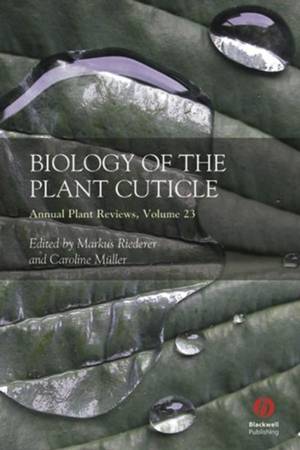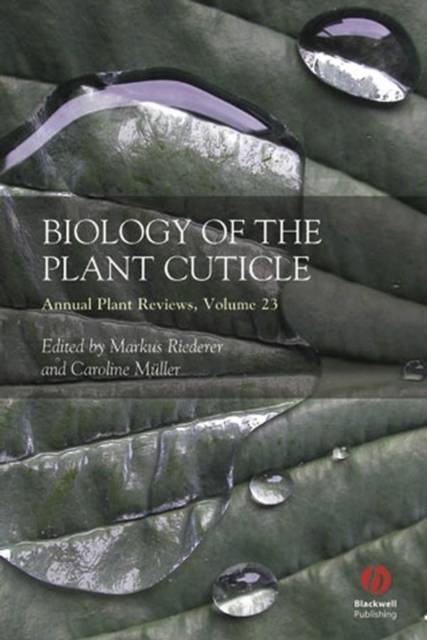
- Afhalen na 1 uur in een winkel met voorraad
- Gratis thuislevering in België vanaf € 30
- Ruim aanbod met 7 miljoen producten
- Afhalen na 1 uur in een winkel met voorraad
- Gratis thuislevering in België vanaf € 30
- Ruim aanbod met 7 miljoen producten
Zoeken
Annual Plant Reviews, Biology of the Plant Cuticle
€ 534,95
+ 1069 punten
Omschrijving
Annual Plant Reviews, Volume 23
A much clearer picture is now emerging of the fine structure of the plant cuticle and its surface, the composition of cuticular waxes and the biosynthetic pathways leading to them. Studies assessing the impact of UV radiation on plant life have emphasized the role of the cuticle and underlying epidermis as optical filters for solar radiation. The field concerned with the diffusive transport of lipophilic organic non-electrolytes across the plant cuticle has reached a state of maturity. A new paradigm has recently been proposed for the diffusion of polar compounds and water across the cuticle. In the context of plant ecophysiology, cuticular transpiration can now be placed in the perspective of whole-leaf water relations. New and unexpected roles have been assigned to the cuticle in plant development and pollen-stigma interactions. Finally, much progress has been made in understanding the cuticle as a specific and extraordinary substrate for the interactions of the plant with microorganisms, fungi and insects.
This volume details the major developments of recent years in this important interdisciplinary area. It is directed at researchers and professionals in plant biochemistry, plant physiology, plant ecology, phytopathology and environmental microbiology, in both the academic and industrial sectors.
A much clearer picture is now emerging of the fine structure of the plant cuticle and its surface, the composition of cuticular waxes and the biosynthetic pathways leading to them. Studies assessing the impact of UV radiation on plant life have emphasized the role of the cuticle and underlying epidermis as optical filters for solar radiation. The field concerned with the diffusive transport of lipophilic organic non-electrolytes across the plant cuticle has reached a state of maturity. A new paradigm has recently been proposed for the diffusion of polar compounds and water across the cuticle. In the context of plant ecophysiology, cuticular transpiration can now be placed in the perspective of whole-leaf water relations. New and unexpected roles have been assigned to the cuticle in plant development and pollen-stigma interactions. Finally, much progress has been made in understanding the cuticle as a specific and extraordinary substrate for the interactions of the plant with microorganisms, fungi and insects.
This volume details the major developments of recent years in this important interdisciplinary area. It is directed at researchers and professionals in plant biochemistry, plant physiology, plant ecology, phytopathology and environmental microbiology, in both the academic and industrial sectors.
Specificaties
Betrokkenen
- Uitgeverij:
Inhoud
- Aantal bladzijden:
- 464
- Taal:
- Engels
- Reeks:
- Reeksnummer:
- nr. 23
Eigenschappen
- Productcode (EAN):
- 9781405132688
- Verschijningsdatum:
- 26/06/2006
- Uitvoering:
- Hardcover
- Formaat:
- Genaaid
- Afmetingen:
- 164 mm x 238 mm
- Gewicht:
- 1020 g

Alleen bij Standaard Boekhandel
+ 1069 punten op je klantenkaart van Standaard Boekhandel
Beoordelingen
We publiceren alleen reviews die voldoen aan de voorwaarden voor reviews. Bekijk onze voorwaarden voor reviews.










